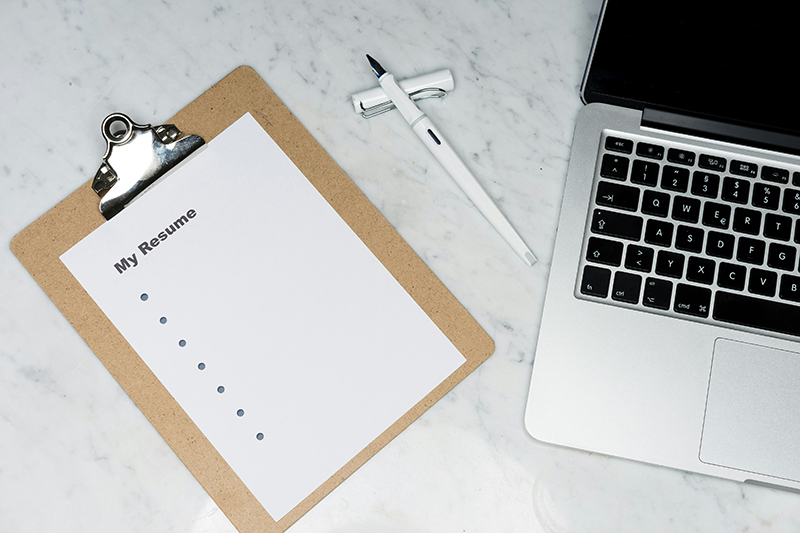Typically, the first prerequisite for a sound job application is a well-redacted and organized Résumé (a document closely related to the Curriculum Vitae, but the latter focuses more on education, publications, and other accomplishments). A shining résumé can move you to the first places of a list comprising perhaps hundreds of prospects. Therefore, your résumé should list your germane abilities according to the job you are applying to… remark those abilities that would guarantee a star performance in the job. Remember that you are the ultimate responsible for highlighting your attributes to constitute a valid option to integrate the new team that the company is forming. However, a good résumé is not a guarantee of success, but it indeed is our presentation letter, and it may be the deciding factor in the employer’s final decission. Often the résumé is processed by the employers in order to select a group of applicants for interviewing them. Thereby, our résumé has to grab the employer’s attention positively. Our résumé has to be professionally elaborated, and reflect clearly, concisely and attractively the information about our academic and professional achievements. A résumé is our marketing letter… and our first goal has to be that the recruiters or prospective employers can’t put down our résumé.

Let’s see how recruiters or prospective employers will not put down our résumé.
The Structure of the Résumé
The résumé must have the following organization:
- Personal information: Name, residential address, contact phone number, e-mail address and date of birth. Sometimes, there is no need to indicate your marital status.
- Education: It must be structured data about your studies and the titles you hold, in chronological order from top to bottom. Please indicate the study center (school, university, etc.), the town and dates.
- Training: You must specify the other studies and practices that complement your academic training. It may help if you indicate the number of hours taken in each course. However, include only those courses which are relevant to the job.
- Professional experience: List your previous jobs, the company’s name, date of start and finish, job title, and your duties and responsibilities. Again, follow a chronological order.
- Languages: Simply point out the languages you command, and your level. Include proficiency tests’ results, if any.
- Technical abilities: This section should comprise a brief description or listing of the skills, techniques and tools (e.g., software) that you command and are pertinent to the job.
- Further details of interest: Driver’s license, availability for traveling, hobbies, and so further. The content of this section really depends on the job’s characteristics.
Often a résumé must be accompanied by a cover letter or covering letter, which simply is a letter of introduction. Cover letters are generally one page at most in length, divided into a header, introduction, body, and closing. The header should include your address and other information, the recipient’s contact information, and the date sent after either yours or the recipient’s address. On its side, the introduction briefly states the specific position desired, and is designed to catch the employer’s immediate interest. The body amplifies on material in the résumé or job application, and explains why you are interested in the job and would be of value to the employer. Finally, the closing summarizes the letter and indicates the next step the applicant expects to take… you can say that you will look forward to hearing from or speaking with the employer.
The Style of the Résumé
Here are a few recommendations for preparing our résumé:
- The writing style must be direct and positive. Your writing should be in the third person.
- Use a simple and concise vocabulary. Don’t recur to contrived or rarely used words. Be as clear as possible.
- Beware of orthographic and grammatical errors… They decrease dramatically the professional feeling of our résumé.
- Learn to organize your information in sections. Title such sections effectively.
- Leave out any information unrelated to the job you’re applying to.
- Don’t use colors. Don’t use “funny” typefaces, or unprofessional mixtures of fonts.
- Nowadays, if a résumé is not redacted via a word processor then it is considered unprofessional and unacceptable.
Résumé Caveats
- The résumé should not be longer than two full sides of A4 paper.
- Do not write anything pejorative about other persons, businesses or your previous employer.
- Keep in mind that the résumé is a marketing document, not a bibliography, and certainly not a biography.
- If we are applying for a specific position, we must not forget to accompany the résumé by a cover letter explaining one’s suitability.
- Never comment on your economic expectations.
- Do not write about the reasons for this change of job or why you’re not working … reserve such information for the personal interview.
- Include a photo only if they ask to do so.
As always, your opinions on this topic are entirely welcome. You might also be interested in my post How to choose a topic for a thesis. Best of luck with your résumé!